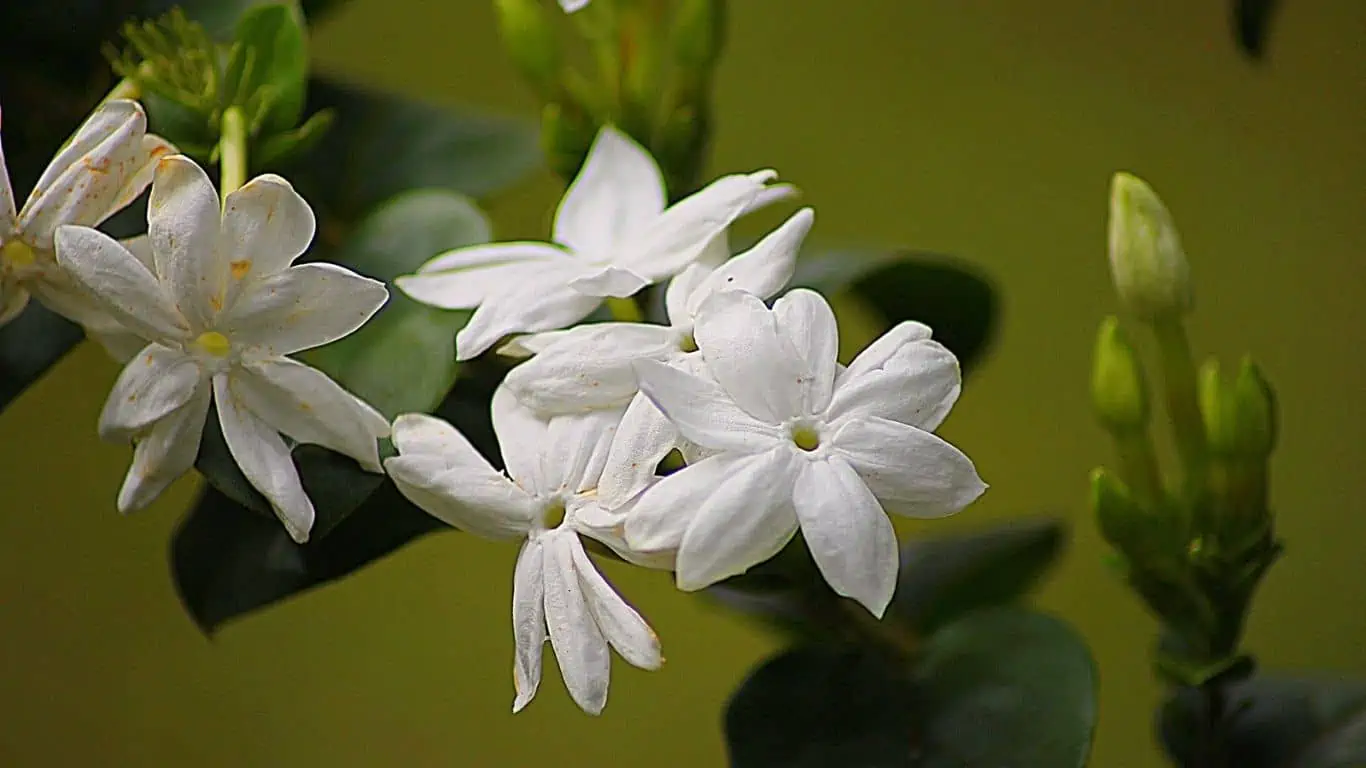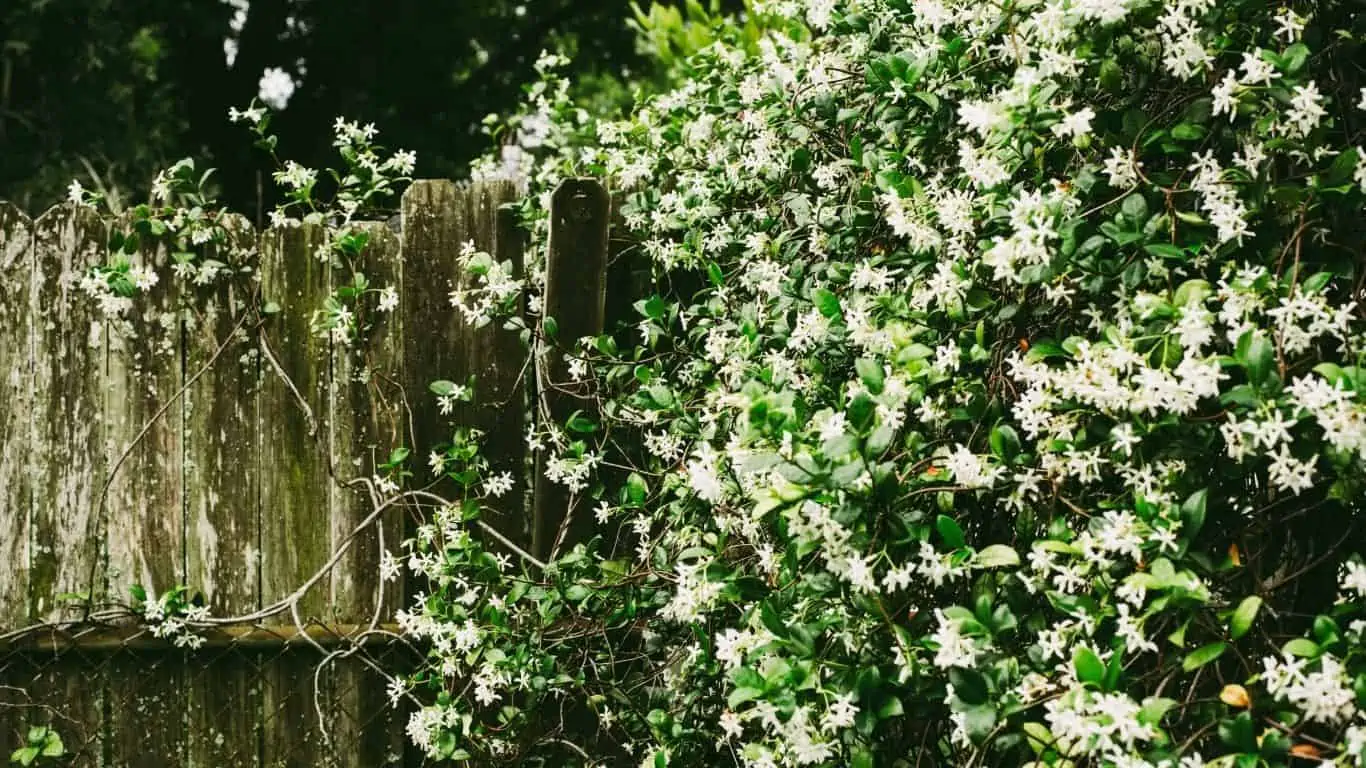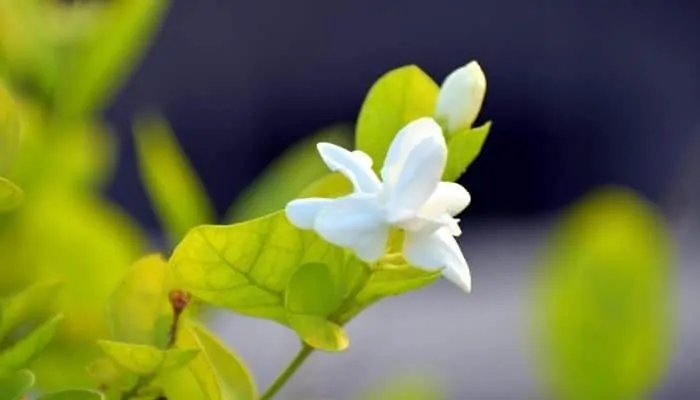If you are interested in the Jasmine plant then we are here to discuss Everything To know About Jasmine Plants. Jasmine belongs to the Jasminum genus. There are more than 40 members in this group and all of them are flowering plants. Jasmine flower comes in a variety of colors. You can find white, yellow, orange and pink Jasmine. All of them are of different varieties. Jasmine plants can grow in USDA hardiness zone 6 through 11. Different Jasmine varieties can grow in a different zone. Some of them are Vines while others are Shrubs. These plants can be evergreen, deciduous, and semi-deciduous types depending on their variety. Keep reading for more details.

Check out my previous post: Orange Jasmine Losing Leaves- What to do?
Jasmine Plant Info
- Common Name: Jasmine
- Botanical Name: Jasminium spp.
- Agricultural Zone: USDA Hardiness Zone 6 through 11.
- Plant Type: Evergreen, semi-evergreen, and deciduous plants.
- Plant Size: 3-11 feet high depending on varieties. They can also span over 6 feet wide.
- Leaves: Small 1-3 inches in size. Some of them have leaflets in groups of 5 or more. While others may have pair of adjacent leaves.
- Flowers: Small star-shaped flowers. They come in a variety of colors including white, yellow, and pink. jasmine flowers grow in clusters and rarely produce seedpods.
- Season: Jasmine is a warm-season perennial plant. It blooms from late fall till next summer depending on the variety. Most of them are spring or summer bloomers.
- Soil type: Jasmine plants can adapt to different soil types. They can grow well in any soil until it becomes soggy. Any light well-drained soil will do the job. Just keep it healthy and full of organic matter.
- Sunlight: Every jasmine variety requires full sunlight for 6 or more hours every day. They can grow in part shade although it’s not good for blooming.
- Watering: Jasmine plants do not require much water. Only water these plants when the soil feels dry. Overwatering can cause problems with the plant.
- Fertilization: Most jasmine plants don’t require frequent feeding. You can feed them with compost and all-purpose fertilizers once in a while. It is better to feed jasmine plants early in fall and spring just before flowering season.
- Common Pest: Jasmine plants are not prone to any serious pests or diseases. Although they can sometimes get attacked by aphids, whiteflies, or mealybugs.
- Uses: Jasmine flowers are fragrant. They are popular in the perfume industry. Jasmine extract is an essential ingredient of many cosmetic and hair oils.
Common Characteristics
There are dozens of different varieties of jasmine available in the US. All of them produce similar white or yellow star-shaped flowers. These flowers have a sweet fragrance. They attract a lot of insects, especially bees and butterflies.
You can find evergreen jasmine vines that are ideal for vertical gardens or hangings. Shrub-type Jasmine is ideal for a container garden and hedge gardens. They are also good for Borders and natural fencing. very few animals can actually feed and digest the jasmine leaves. They are toxic to some extent. So you don’t have to worry about the hedges in the fence line.
Jasmine plants start blooming in spring and continue till late summer. Some varieties of jasmine can also bloom in the fall and winter seasons, especially in warm regions.
Jasmine plants are very resilient with different soil conditions. Although all of them prefer slightly acidic soil with good drainage. Organic matter in the soil is helpful for root growth.
Most vine-type jasmine can become invasive if we ignore their growth. Therefore always keep an eye on these plants and enjoy their fragrant blooms.
Popular Varieties of Jasmine
Arabian Jasmine or the Jasminum Sambac. It is a short semi-evergreen Jasmine ideal for zone 7 through 9. These shrubs produce small white flowers in clusters and can grow to a maximum height of 3-4 feet.
Angelwing Jasmine is a taller shrub. It is also known as Jasminum nitidum. These shrubs are vine-like and can grow as tall as 6 feet. They may require support to stay in place.
Other popular jasmine varieties include-
- Primerose jasmine or Jasminum mesnyi
- Italian Jasmine or Jasminum humile
- Common White jasmine or Jasminum officinale
Confederate start jasmine or Trachelospermum jasminoides and Orange Jasmine or the Murraya Paniculata are not true Jasmine. They may look and smell like jasmine flowers. That’s how they got their special names.
Read this: How to Control Yellow Aphids on Jasmine?
Leaf Structure
The Jasmine Plant family is very versatile. Different varieties can produce different types of leaves. Most of them are oval in shape although their size, color, and number may vary with species.
Some of them are just 1 inch long and 3/4 inch wide. While other varieties can develop bigger leaves of2-3inches in size.
These leaves also come in a variety of colors. You can find jasmine plants with light to dark green leaves, variegated leaves, purple leaves, light yellow leaves, or greenish0-blue leaves. These leaves look as good as the jasmine flowers.
The only thing to care about these leaves is that some of them are toxic. Therefore never chew these leaves or don’t let others do so. Not all of them are dangerous but it is always better to stay safe than sorry.
Jasmine Flower
Jasmine plants can produce small white, yellow or pink flowers. These flowers contain sweet fragrances that can make you happy instantly. They are very popular in the fragrance and cosmetic industries.
In tropical areas, these fragrant flowers are an essential part of garlands. Local females love these flowers.
Most jasmine plants produce star-shaped flowers. These flowers can have a single layer or multi-layer in them. The flower is a singleton with a common core and separate petals. The jasmine flower contains petals in a group of 7. All of them are evenly spaced at 35-45 degrees from another. This precise configuration makes the flower even in looks.
These flowers grow in clusters and can produce seeds but they really do. Most hybrid jasmines don’t produce seeds but the original varieties can. We can use these seeds to grow new plants although this is not the best way to grow jasmine.
How to Choose a Jasmine Plant for Gardening?
Growth Pattern
You can start a jasmine plant with its seed or use a cutting for the best results. I always prefer the cuttings over jasmine seeds. Jasmine seeds are not very easy to find. If you find some then their viability is always a question. Even if you manage to grow some of them still their growth rate is very slow. At last jasmine plants grown from seed may never yield similar flowers as their parent. That’s why I don’t like wasting my time with these seeds.
You should start with a healthy plantlet or a rooted cutting of jasmine. They can easily grow roots if allowed to stay in contact with moist soil for just 2 weeks. Once the branch has some root cut it off and grow in a new spot.
If you start with a grown jasmine plant then just care for a couple of seasons before it can bloom. Usually, new jasmine plants can take 1 or two years to mature before blooming. The maturity period is thrice longer if you go with the seeds.
The vine-type jasmine will extend its limbs to maximum length by the time of maturity. The bush type on the other hand may spread out in all directions. You have to provide some support to keep them in place. Else they will develop multiple root nodes along the branch and invade your garden.
Basic Requirements
Jasmine plants only need-
- Regular Watering
- Well Drained moist soil
- Abundant nutrients in the soil
- Proper Sunlight, at least 4-6 hours of direct light every day.
- Ambient temperature of 50-65 degrees Fahrenheit.
- Staking and
- A little bit of mulching, Pruning, and Deadheading.
If you follow these requirements carefully then you can maintain your jasmine plants very easily. It’s not too much, Only spend 1 or 2 hours in a couple of days for your loving plants. Look out for their needs and just care for them.
If you fulfill all of these requirements then you may never face any problem including pests or any diseases in your jasmine plants. So give it a try and please share your experience with us.
Also read: How to get Maximum Bloom in Jasmine Plants?
Common Pest and Problems
Jasmine plants are very hard and resilient. They can fight for their lives in the worst cases. Some varieties can even tolerate extreme drought and cold. So pest is not a big problem for these plants.
Although if the situation is not favorable like during a cloudy week or rainy season then you may find a few bugs. Usually, Aphids, Whitefly, and mealybugs are the only disturbing pests in the jasmine garden. They feed on plant sap and can slow down growth. Severe infestation of these bugs can shunt the jasmine plant growth with curled and deformed leaves.
These bugs can also carry viruses and bacteria from infected plants to healthy ones. Viral diseases are deadly for Jasmine plants. You can’t save severely infected plants so discarding is the only option.
You should act before any of these pest attacks your garden. Use neem oil, soap water to keep them away from jasmine plants and avoid disaster.
fungal infection is also common in jasmine plants, especially those growing in damp soil. Avoid splashing soil on the foliage while watering these plants. Add fungicide to the soil to avoid any soil bourne fungus growth. You can use the dry fry technique to clean the soil in containers.


